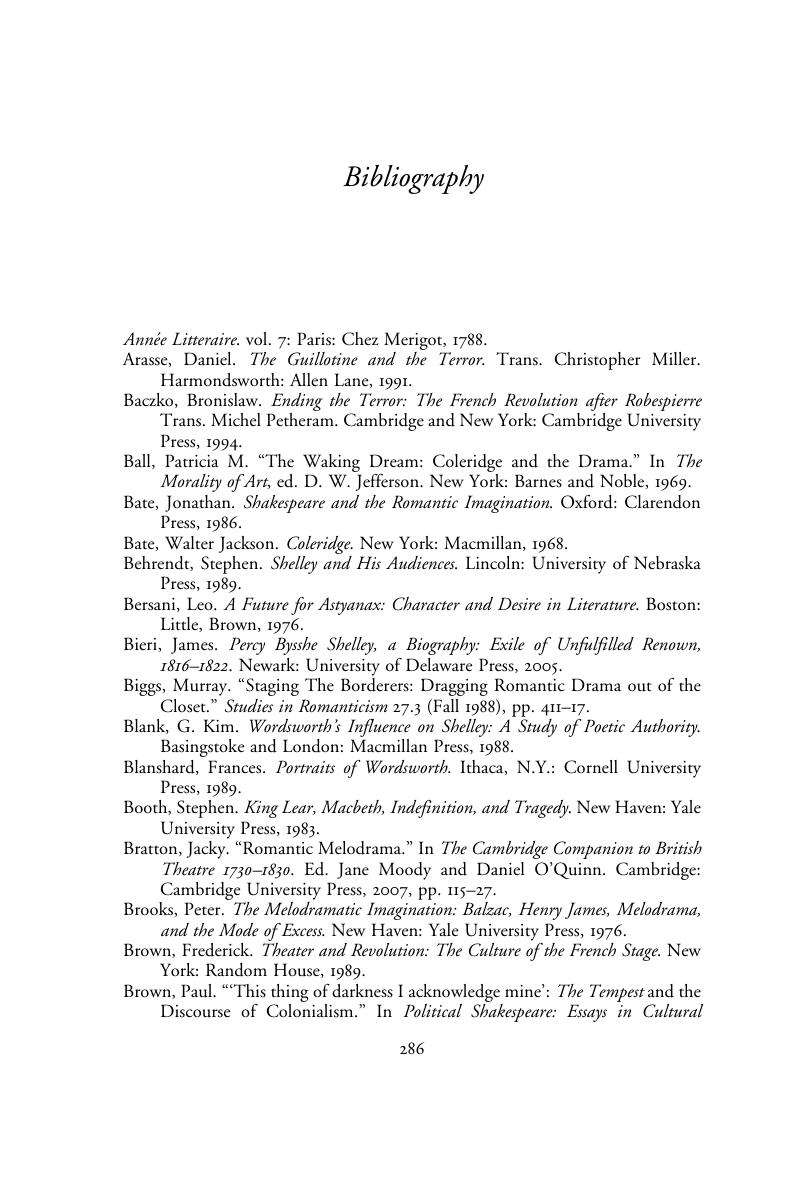Bibliography
Published online by Cambridge University Press: 05 May 2014
Summary

- Type
- Chapter
- Information
- Romantic TragediesThe Dark Employments of Wordsworth, Coleridge, and Shelley, pp. 286 - 295Publisher: Cambridge University PressPrint publication year: 2011

